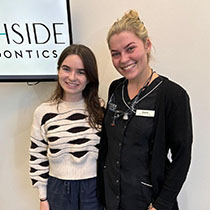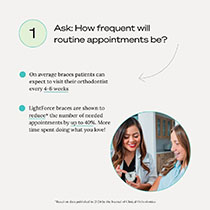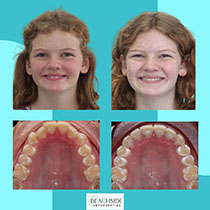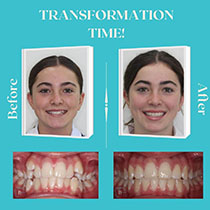Sep 19, 2024
Invisalign® vs Braces: Which One Should You Choose?
Invisalign® vs Braces: Discover the key differences in cost, comfort, and results. Read our expert guide to choose the best option for your smile.

If you’re looking to improve your smile and correct your teeth alignment, you may be wondering whether Invisalign® or braces are the better choice. Both are popular orthodontic treatments that can help you achieve a straighter, healthier smile, but they have some key differences to consider before you decide. In this blog post, we’ll compare Invisalign® and braces in terms of cost, benefits, drawbacks, and suitability for different dental needs.
What is Invisalign®?
Invisalign® is a brand of clear aligners custom-made to fit your teeth and gradually move them into the desired position. The aligners are made of a flexible, transparent plastic that is virtually invisible when worn. You can remove them to eat, drink, brush, and floss, making them more convenient and comfortable than braces.
Treatment typically involves wearing a series of aligners, each for about one week, until you reach your final result. You’ll need to visit your orthodontist every six to eight weeks to monitor progress. At Beachside Orthodontics, we use Dental Monitoring, a digital tool that allows us to track your progress weekly from the comfort of your home with fewer in-chair appointments.
What Are Braces?
Braces are traditional orthodontic appliances consisting of metal or ceramic brackets attached to your teeth and connected by wires and rubber bands. Braces apply constant pressure to shift and align your teeth over time.
Unlike aligners, braces are fixed to your teeth and only removed once your treatment is complete. You’ll visit your orthodontist every four to twelve weeks to have them adjusted. Braces can address a wide range of orthodontic problems, including crowding, spacing, overbite, underbite, crossbite, and open bite.
How Much Do Invisalign® and Braces Cost?
The cost of Invisalign® and braces depends on factors like the complexity of your case, treatment duration, and whether any additional devices are needed to achieve your ideal result.
"When recommending a treatment plan, we look at what needs to be achieved, not just the appliance," says Dr Steve Moate. "For many patients, there is more than one suitable option, and we’ll walk you through the pros and cons of each so you can make an informed choice."
At Beachside Orthodontics, we offer financing options and payment plans to help make treatment more affordable.
What Are the Pros and Cons of Invisalign® and Braces?
Both Invisalign® and braces have unique advantages and limitations. The best option for you depends on your preferences, dental needs, and lifestyle.
Invisalign® Pros:
- Aesthetics: : Clear and discreet; hardly noticeable when you smile.
- Comfort: Smooth aligners are gentle on gums and cheeks, with no wires or brackets.
- Convenience: Removable for eating, drinking, brushing, and flossing.
- Flexibility: Custom-made to your teeth and lifestyle. Worn 22 hours per day, with Dental Monitoring to keep treatment on track.
Invisalign® Cons:
- Discipline: Requires commitment to wear aligners consistently and maintain good hygiene.
- Effectiveness: May not be suitable for very complex cases or significant bite correction.
- Attachments: Small tooth-coloured bumps are bonded to help movement; they can make aligners more visible and harder to remove at first.
Braces Pros:
- Versatility: Can treat a wide range of orthodontic issues, including more complex movements.
- Speed: May close gaps and align teeth faster due to continuous pressure.
- Reliability: Fixed in place, so there’s no risk of forgetting or losing them.
Braces Cons:
- Aesthetics: More noticeable than Invisalign®, though options like LightForce clear braces are less visible.
- Comfort: Can cause soreness or irritation, especially after adjustments.
- Convenience: Not removable; require more effort to clean and dietary restrictions to avoid damage.
How to Choose Between Invisalign® and Braces
The best way to decide is by consulting your orthodontist. They will examine your teeth and recommend the most suitable option for your needs.
"Your treatment should fit not only your dental goals but also your lifestyle," Dr Moate explains. "That’s why we spend time talking with each patient about what to expect, so you feel comfortable and confident in your decision."
Your orthodontist will discuss the benefits, drawbacks, cost, and timeline of each option to help you make the best choice.
Conclusion
Invisalign® and braces are both highly effective treatments to improve your smile and oral health. Invisalign® offers a discreet, comfortable option, while braces can often address more complex concerns with predictable results.
To learn more or to find out which treatment is right for you, contact Beachside Orthodontics and book a consultation today.
back








